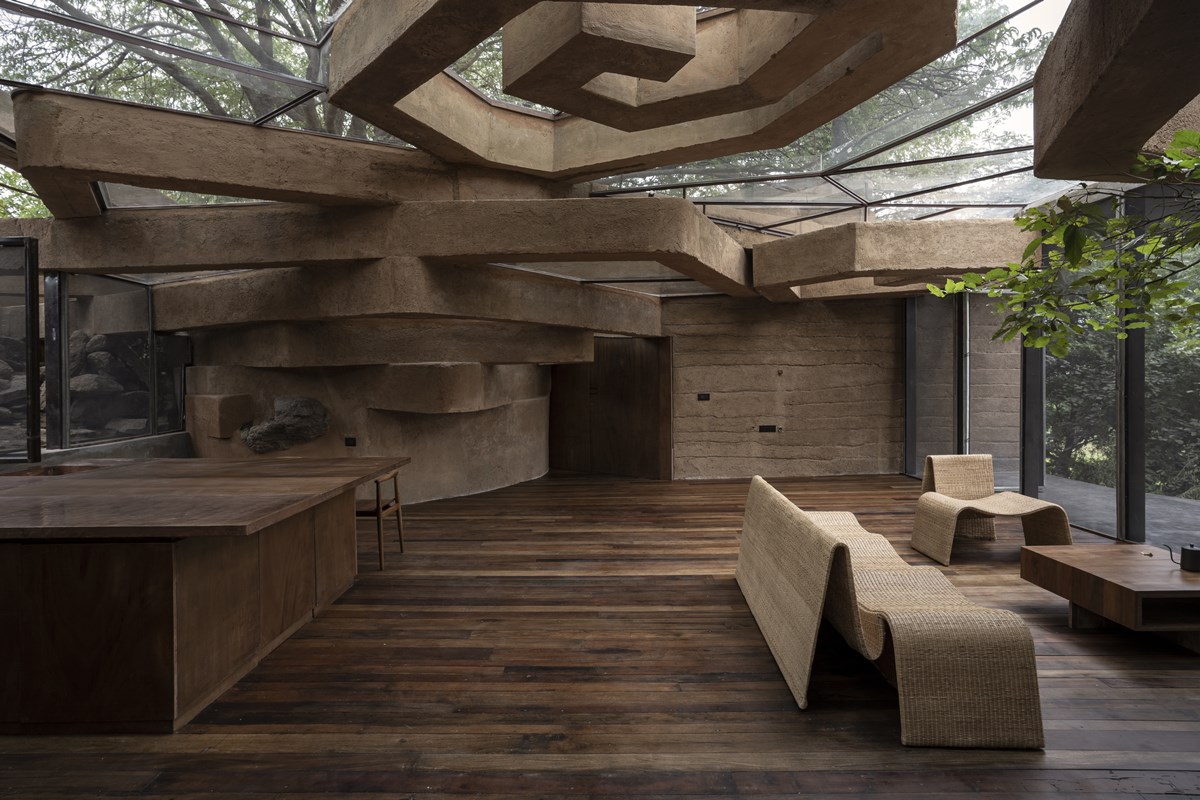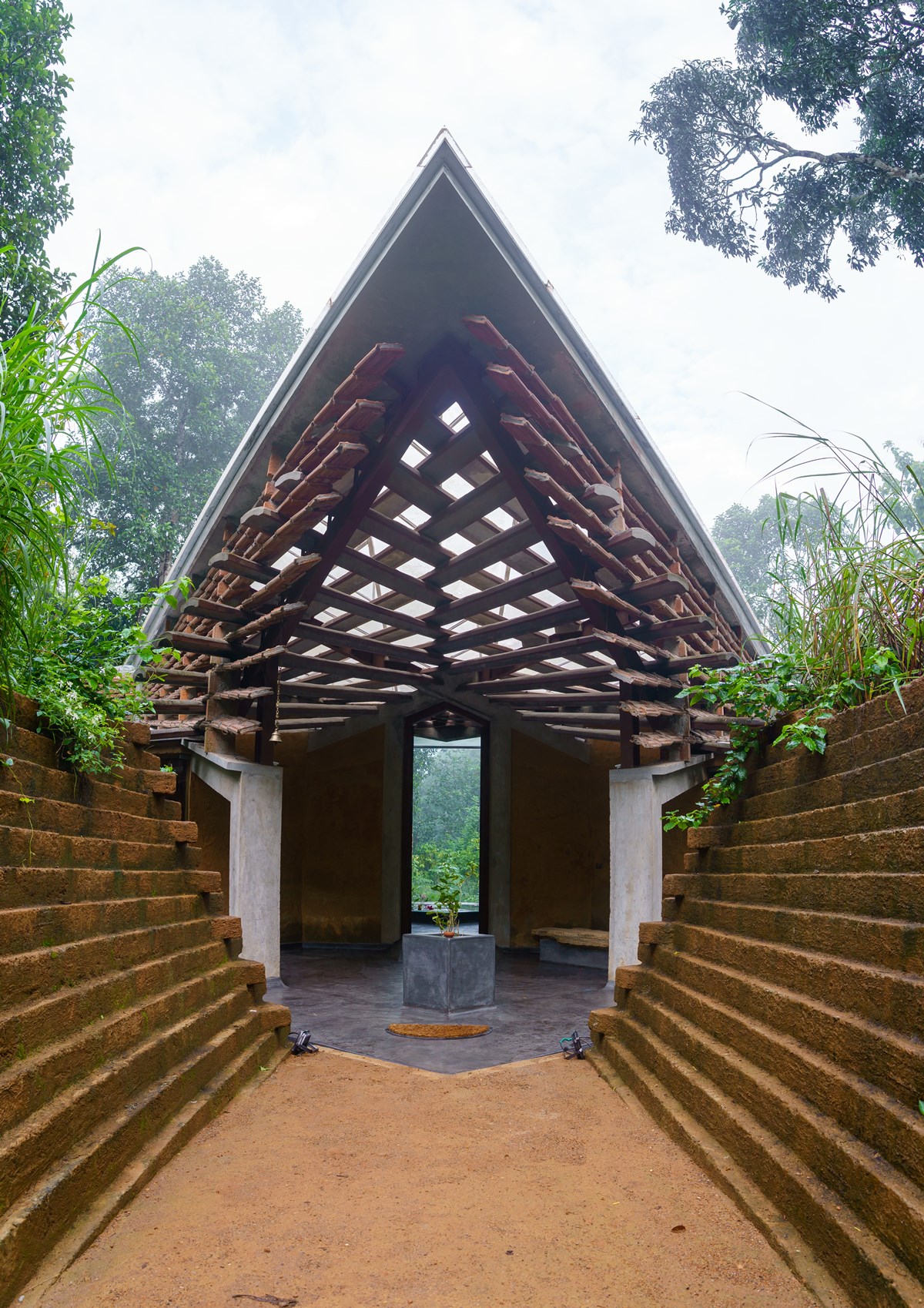📣 For more lifestyle news, click here to join our WhatsApp Channel and also follow us on Instagram
How architect Vinu Daniel made it to the 2023 TIME100 Next list
Kerala-based architect Vinu Daniel asks important questions: 'should we build?' and 'why?' He answers these in the mud and brick homes he builds for people.
 Pirouette House (Credits: The Wallmakers)
Pirouette House (Credits: The Wallmakers)What if you could live in a house that’s sunken into the earth, giving you a cave-like feel, with ample light, air, and greenery entering your room? What if brick walls could pirouette around your home to make it seem like the house is in sync with the adavus (movement) of a dancer?
Doing this is Kerala-based architect Vinu Daniel, who is one of the three Indians to make it to the “2023 TIME100 Next” list. The Time magazine list honours rising leaders in health, climate, business, sports and arts. Harmanpreet Kaur, Indian women’s cricket team captain, and journalist Nandita Venkatesan are the others on the list.
 Architect Vinu Daniel (Credits: The Wallmakers)
Architect Vinu Daniel (Credits: The Wallmakers)
What makes Daniel’s work stand out in the architectural landscape of the country is his response to materials and site context. While in the Chuzhi (whirlpool) House, in Shoolagiri, Tamil Nadu, he made whorls of precast poured earth composite to accommodate the three large tamarind trees on site, in a home in Pathanamthitta, Kerala, he used the earth from the site to build the walls, and the debris became a curvilinear wall in the central courtyard.
“I’ve been practising for about 17 years now. I grew up in Dubai and all I saw there were concrete boxes. I always felt there has to be a better way to build. While I believe there are different approaches to being sustainable in architecture, I genuinely feel the Gandhian definition of finding materials and resources within a three-kilometre radius of the site is the best way to explain it,” says Daniel.
 The Ledge (Credits: The Wallmakers)
The Ledge (Credits: The Wallmakers)
When Daniel joined the College of Engineering Trivandrum in 2000, he came across the work of architect Laurie Baker, known for his eco-conscious buildings in brick. “His aesthetics appealed to me. I had a chance to visit his home, The Hamlet, in Thiruvananthapuram. It changed my life to see how we could return to nature in the way we build. Baker’s philosophy permeates through his entire house, in being resourceful in the use of space and materials,” says Daniel.
All of Daniel’s projects carry that spirit of experimentation, be it the Ledge House in Peeremedu, a hill station in south Kerala, where he uses treated Casuarina tree poles almost like shards in the roof and external walls; the Chirath residence in Pala, near the Meenachil river, where he gave the roof a latticed finish and opened up spaces like a lamp, full of light, or creating ‘clothcretes’, fabric draped over steel frames and coated with lime and soil, so it can be used as furniture.
 Chuzhi living room (Credits: The Wallmakers)
Chuzhi living room (Credits: The Wallmakers)
If in the Jackfruit Garden Residence, in Vangola, Ernakulam, he used discarded pipes from the junkyard, where they bend and twist to become grills and chandeliers, in a house in Mannanthala, Thiruvananthapuram, he hangs a staircase from a bamboo facade so his clients can literally walk on the wild side.
“Often, we forget that we need to close the loop. For instance, when you throw something away at home, you never stop to think where all the discarded material goes? People often see things as scrap. For me, in my practice, I see it as building blocks,” says Daniel.
His firm Wallmakers, which he set up in 2007, has been a result of his stints at the Auroville Earth Institute, Puducherry, when he worked on post-tsunami construction for UNDP. “I fail to see how a 4,000 sq ft area for just four inhabitants made with the most “sustainable material” can actually be good for the environment. It doesn’t add up. If your foundation itself is flawed, how will your building stand?” he says, “An architect is a butcher. He destroys so much when he builds – be it ecosystems in the soil or trees. But it’s my job and when one builds, there’s also a responsibility to the environment. We need to do something less than what should be.”
 Chirath Residence (Credits: The Wallmakers)
Chirath Residence (Credits: The Wallmakers)
Talking about maintenance in homes as an aspect of design, Daniel reminds us that our elders, and some of us, have lived in homes where thatched roofs had to be replaced at intervals and mud floors redone. Now we seem to embrace an unhealthy way of life that doesn’t allow nature, air, or light to enter. While Daniel leads a rather nomadic life as he moves from one site to another, he is currently working on a couple of schools in Maharashtra and a bridge in Karjat.
📣 For more lifestyle news, follow us on Instagram | Twitter | Facebook and don’t miss out on the latest updates!
📣 For more lifestyle news, click here to join our WhatsApp Channel and also follow us on Instagram
- 01
- 02
- 03
- 04
- 05



























